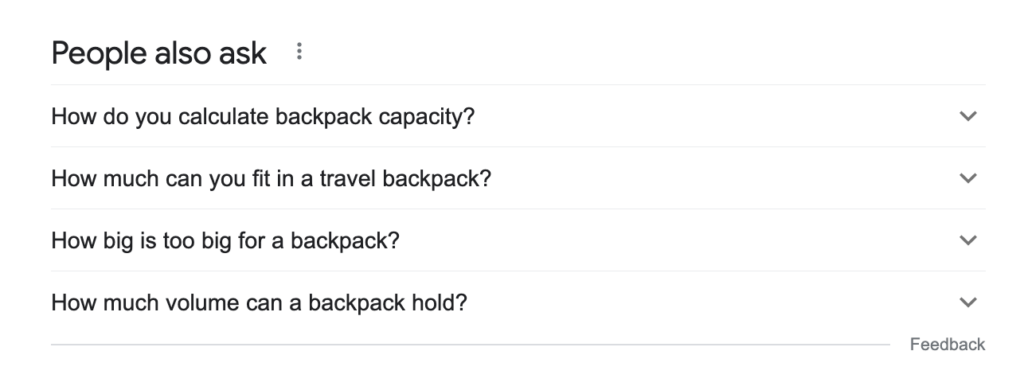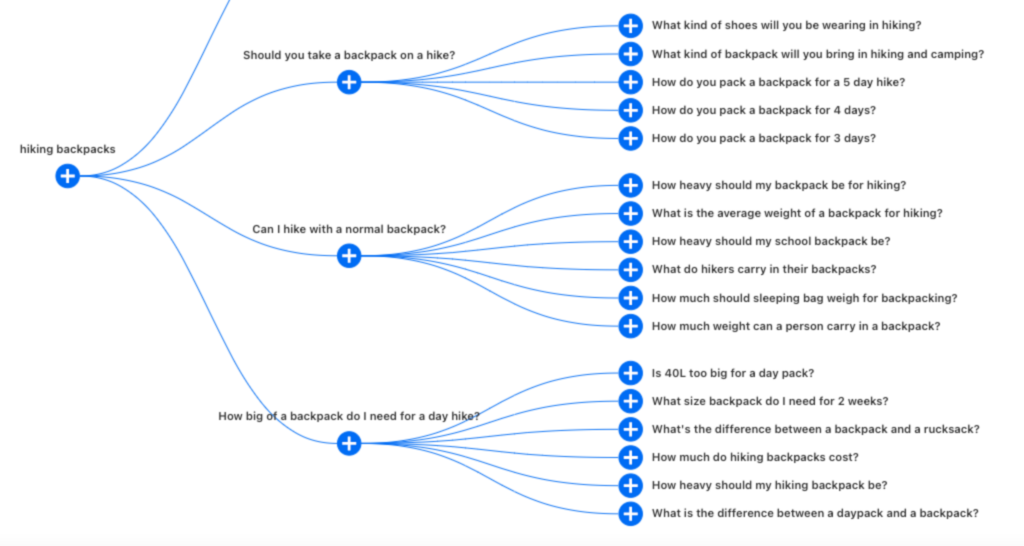The best source for SEO inspiration are your customers. From the conversations you have and the feedback you receive, your customers are telling you how they use your products and how they benefit from your products.
This valuable information can guide your SEO strategy by identifying keywords, phrases, and topics that resonate with your target audience. Understanding your customers’ needs and preferences allows you to create relevant and engaging content that aligns with their search intent. By leveraging customer insights, you can optimise your website and prioritise the creation of content that addresses their specific pain points and offers solutions. Ultimately, by listening to your customers and incorporating their input into your SEO efforts, you can enhance your online visibility and attract more qualified organic traffic.
Table of Contents
One simple recon through your reviews should give you plenty of insights in terms of common problems your products solve. That means content that you can start creating that targets problems other customers are looking to solve too.
Let’s figure out how to gather customer insights using the search queries they use to discover the products they need (ie. what goes on before they reach your store).
What are the most common questions people ask about your products using Google (eg. before they reach your site)?
On your own Google-led product discoveries you’ll have come across the ‘People Also Ask’ element of the results page. Let’s say you’re in discovery-mode for a new backpack for your summer hiking adventures, but you’re wary of all the different sizings. You run a search on Google and you’ll see something like this on the desktop;

Now, there’s no recorded data on what % of people click People Also Ask, but they’re a tremendously useful tool to help people refine their search and learn more about the topic they’re Googling.
How can you use Google’s People Also Ask to improve my page ranking?
People Also Ask is useful for the customer. It’s also incredibly useful for the ecommerce marketer. You can gather fantastic insight into what people are searching for around your particular category. That’s great. You will ALSO learn what insights you can add to your optimised product pages and articles. Think about it. You’re learning what questions are pinging into your customer’s heads before they land on your product page.
Your job is to gather those insights and use them to your advantage.
How can I access Google’s People Also Ask data I need?
Sure you can go through and copy and paste all the search insights you gather. However. There’s a brilliant tool that will help you do this within minutes.
Introducing AlsoAsked.com
AlsoAsked is a creation of UK Digital agency Candour. It’s super simple. You just input the term you’re mining customer insight data around;

and you’ll be presented with live data, pulled directly from Google, on the People Also Asked response to your chosen search query.
How can People Also Asked data can help you optimise and improve ranking for landing pages, articles and product pages?
Let’s head back to the mountains and the backpacking quandary we discussed earlier. So, you’re the ecommerce marketer at a hiking backpack brand and you want to create more useful content for your product pages.
You start out by learning the People Also Asked data for the general search term ‘Hiking Backpacks’ and AlsoAsked provides you the following response;

Great. You now know that your prospective customers are asking questions regarding whether they can hike with a normal backpack – leading to further questions;
- How have should my backpack be for hiking?
- What do hikers carry in their backpacks?
- How much weight can a person carry in a backpack?
- What is the average weight of a backpack for hiking?
Usually, at this stage in any keyword research you’ll be looking for search volume data. That’s not your concern here. Right now, you’re looking for topics to cover that will help you create the copy that will help your visitor make a more confident purchase.
SEO 101: What are the problems you can help your customer solve?
You see those (+) icons? Clicking on each will help you dig further into specific categories where you will discover some real content gems.

Now we have next-level insights relating to specific size-queries your customers may have, ‘Is a 65l backpack big enough?’
Treat each of these questions People Also Ask in isolation and consider how best you can deliver your response. Should you;
- Create landing pages that answer these questions head-on? Great for SEO…
- Add responses as sections within your product pages? eg. How to choose the right size for your new backpack? Great for conversion…
- Create product-specific FAQs that sit at the footer of your product pages?
- Create articles taking a ‘they ask, you answer’ approach?
You’re creating evergreen, google-lovin, customer-centred content using these valuable keyword insights. This isn’t a process of keyword-stuffing, you’re learning directly from your potential customers what information will help them discover you and then decide whether or not to buy your product.
Start creating search optimised product pages that rank focusing on what people need to know
This is such a simple and cost-effective task that blends your work in SEO and conversion optimisation.
- You’re creating content that helps you rank better for terms customers search around.
- You’re delivering better information on your product pages, FAQs or articles that helps you convert visitors into buyers.
AlsoAsked costs from £12/mo (100 monthly searches). Sure you could take the time searching each individual phrase yourself, but I doubt you have the time. Plus, on the LITE version for £23/mo you can export all that data into CSV format. Perfect for mapping out your product-focused content strategy.
Super short video below explaining more about AlsoAsked…
Let’s finish up by answering some of the most popular questions regarding People Also Asked and how to optimise your store to make best use of this aspect of the SERPs
How to feature in People Also Ask?
There’s no button to click in Google Search Console to begin ranking for your customer’s questions. To feature in People Also Ask on Google, it’s crucial to understand the user’s intent and optimise your content accordingly. Focus on answering the questions related to your target keyword and provide valuable information. This is, again, why a tool such as AlsoAsked is invaluable to your work. It will provide you on a plate the most common questions that your customers are asking regarding products, categories or upstreaming to the main challenges your customers face.
Structured data markup can also help search engines identify and display your content as a featured snippet. Here’s a great tool from Google to help you understand markup and how to employ it on your store more effectively -> Schema Marketing Testing Tool From Google
How to optimise for People Also Ask?
One effective way to optimise for the “People Also Ask” feature on Google is a simple approach to the majority of your work in SEO…. provide comprehensive and relevant answers to the questions that appear.
By understanding the search intent behind these queries and providing valuable content, you can increase your chances of being featured in the “People Also Ask” section and driving more traffic to your ecommerce store.

